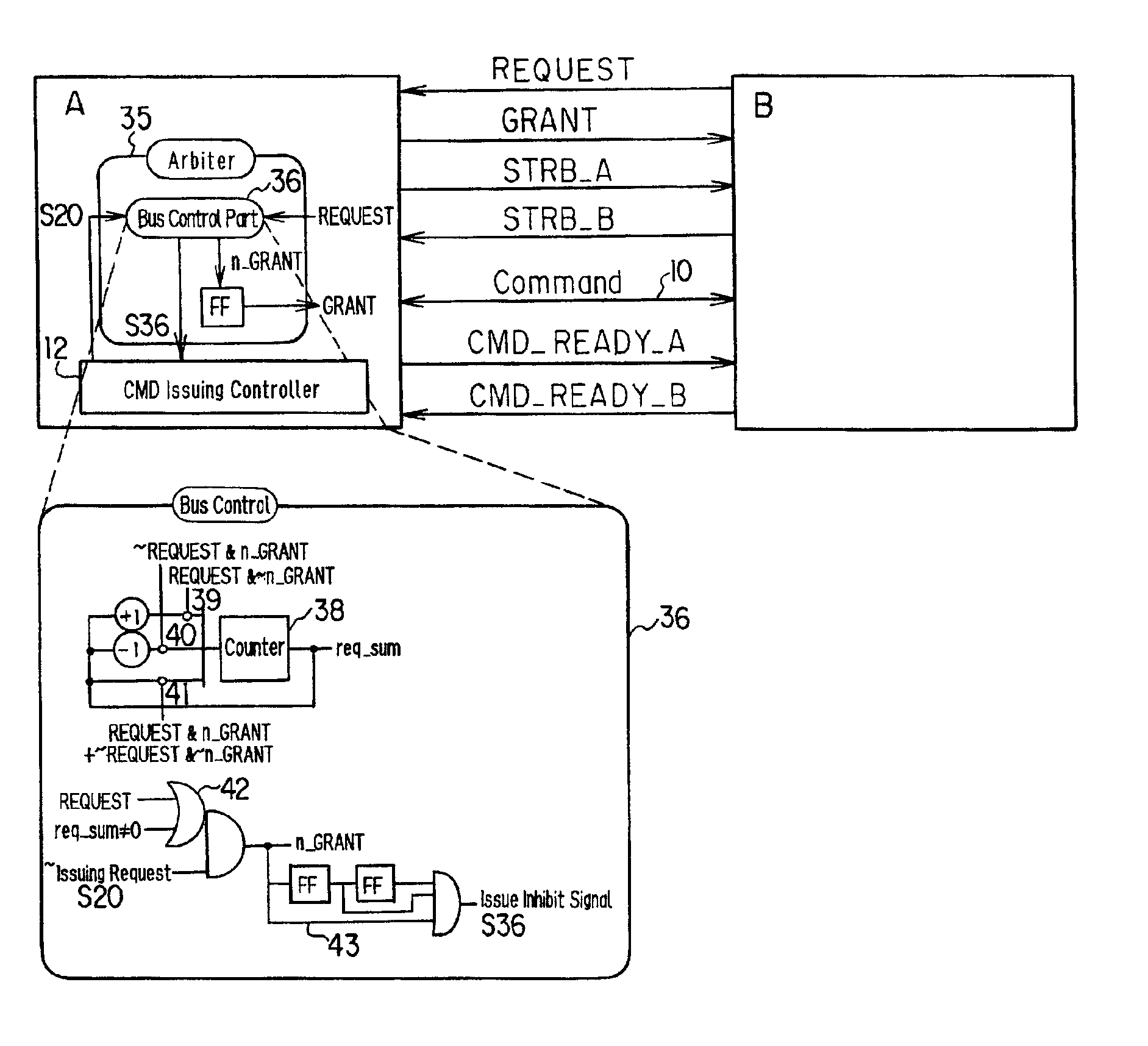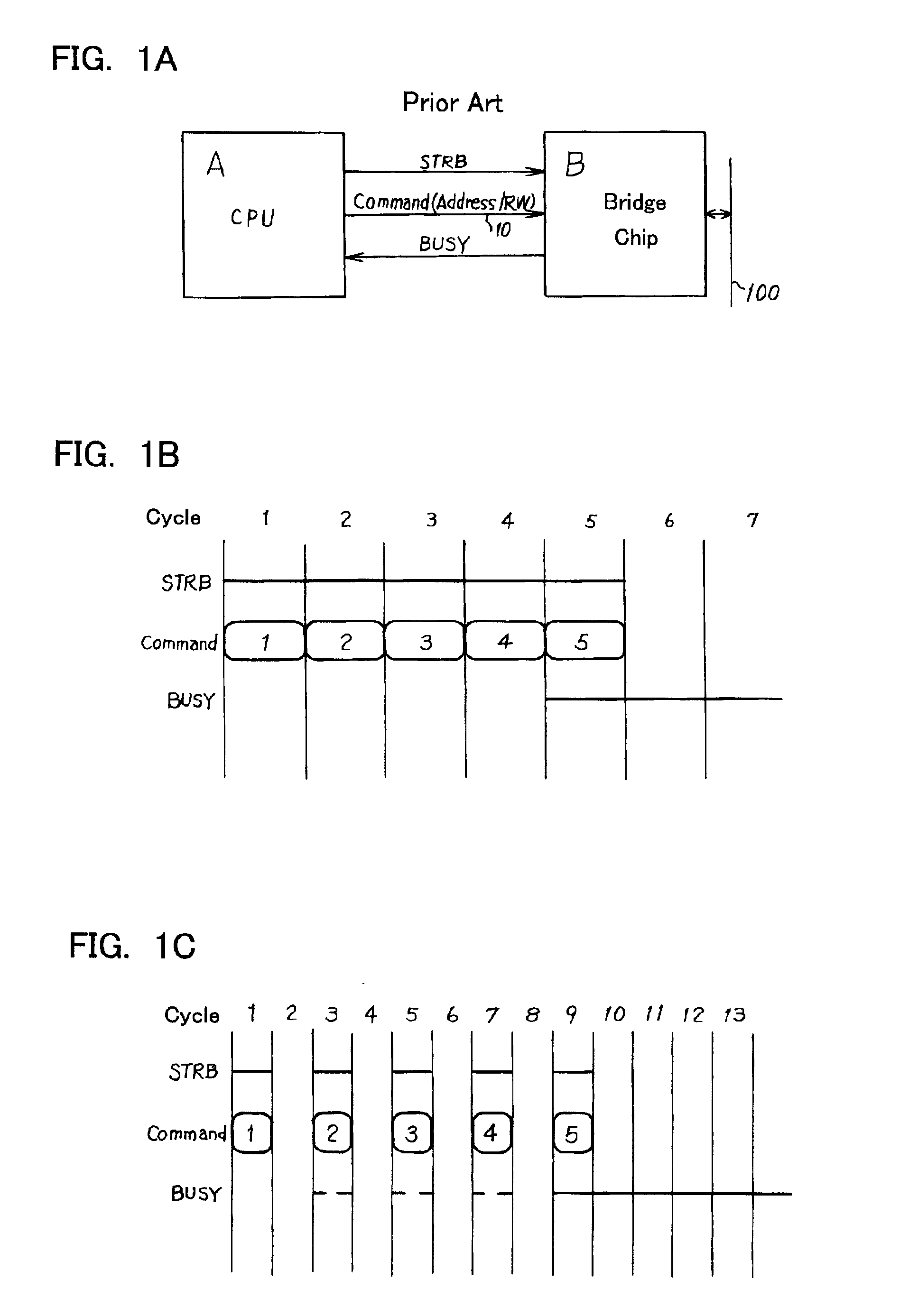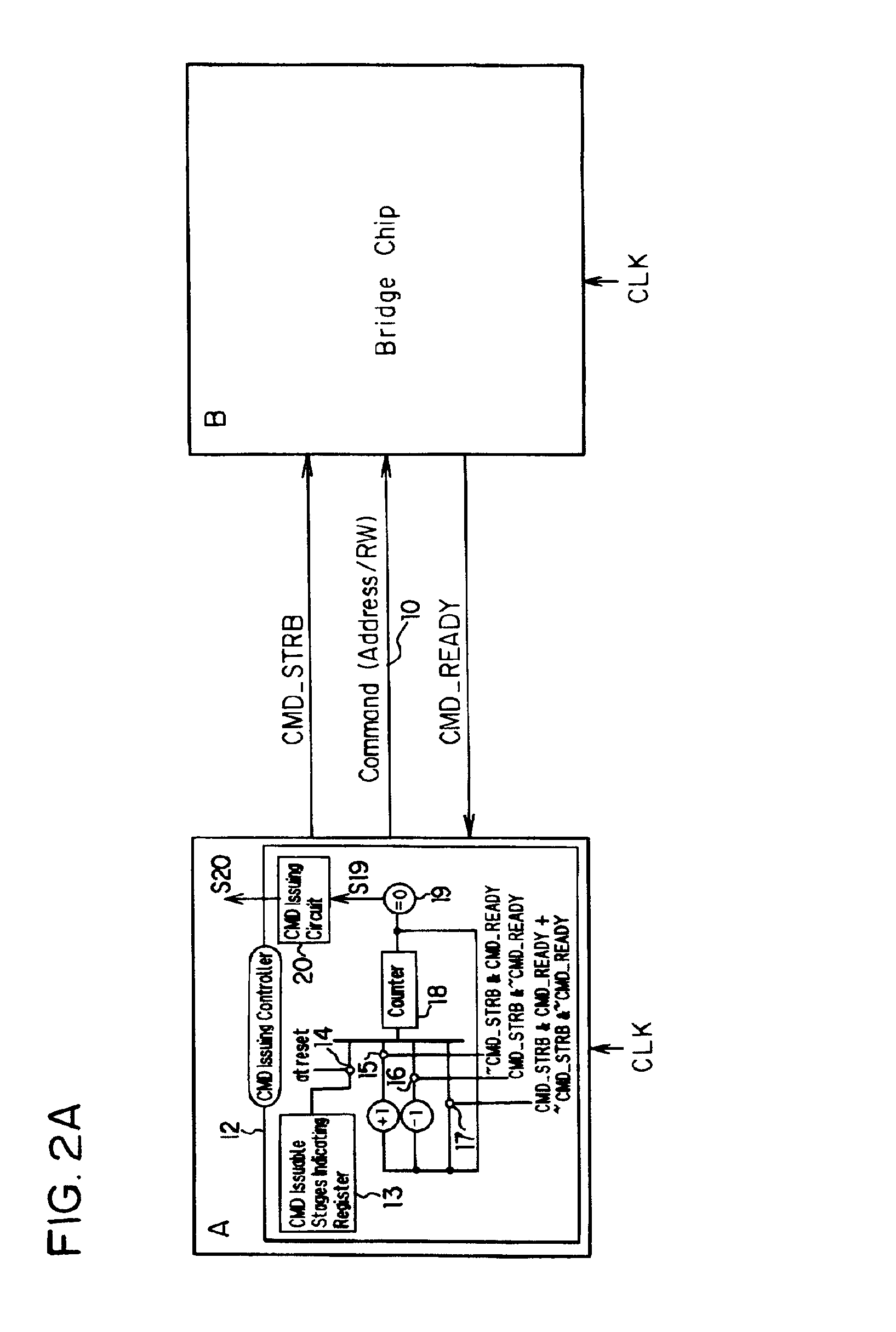Bus control system for integrated circuit device with improved bus access efficiency
a technology of integrated circuit devices and control systems, applied in the direction of concurrent instruction execution, instruments, computing, etc., can solve the problems of command buses but data buses, busy busy signals cannot be output, and reduce the efficiency of bus access, so as to achieve efficient output
- Summary
- Abstract
- Description
- Claims
- Application Information
AI Technical Summary
Benefits of technology
Problems solved by technology
Method used
Image
Examples
first embodiment
[0044]FIGS. 2A-2C are diagrams depicting the command issuing control according to the FIG. 2A is a connection diagram between a microprocessor A and a bridge chip B, and FIG. 2B is an operation timing chart thereof. FIG. 2C is a connection diagram when commands are mutually issued between the microprocessor A and the bridge chip B. FIG. 3 is a diagram depicting the detailed configuration of FIG. 2A.
[0045]As FIG. 2A shows, the microprocessor A, at the issuing side LSI which issues a command, comprises a command issuing control circuit 12, and the command issuing control circuit 12 further comprises a issuable stages indication register 13 which holds data on the number of stages to indicating the number of commands which the bridge chip B, that is, the receiving side LSI to receive a command, can simultaneously process, and a counter 18. The command issuing control circuit 12 further comprises switches 14, 15, 16 and 17, a command issuing inhibiting signal generation circuit 19, and...
second embodiment
[0064]FIG. 5 are diagrams depicting the command bus control according to the In the case of the example in FIG. 2C where uni-directional command buses are disposed, the number of bus lines is enormous. In FIG. 5, the command bus Command is a bi-directional bus, and the command bus is shared for the chip A to the chip B direction and the chip B to the chip A direction. As a result, the control of the access right to the command bus is required.
[0065]FIG. 5A is a connection diagram between the microprocessor A and the bridge chip B. Since the command bus 10 is a bi-directional bus, the request signal REQUEST from the chip B to the chip A and the grant signal GRANT from the chip A to the chip B are added. The chip A also has an arbiter circuit 35 for controlling the access right of the bi-directional command bus 10.
[0066]The operation will now be described with reference to the timing chart in FIG. 5B. During normal times, the chip A has the access right to the command bus, and the ch...
third embodiment
[0078]FIG. 7 are diagrams depicting the data issuing control according to the FIGS. 7A and 7B are diagrams corresponding to FIG. 2C and 2B. In addition to the command issuing control circuit 12 shown in FIG. 2, the microprocessor A has a data issuing control circuit 112 with a similar configuration as the command issuing control circuit 12 as shown in the connection diagram in FIG. 7A. In the same way, in addition to the command issuing circuit 12B, the bridge chip B also has a data issuing control circuit 112B with a similar configuration as the command issuing circuit 12B.
[0079]This data issuing control circuit 112 is also comprised of a data stages indication register 113 which has information on the number of data stages of the data buffer which the chip B can simultaneously receive, a counter 118 where the number of data stages is set at reset, an issuing inhibiting signal generation circuit 119 which generates the data issuing inhibiting signal S119 when the counter value is ...
PUM
 Login to View More
Login to View More Abstract
Description
Claims
Application Information
 Login to View More
Login to View More - R&D
- Intellectual Property
- Life Sciences
- Materials
- Tech Scout
- Unparalleled Data Quality
- Higher Quality Content
- 60% Fewer Hallucinations
Browse by: Latest US Patents, China's latest patents, Technical Efficacy Thesaurus, Application Domain, Technology Topic, Popular Technical Reports.
© 2025 PatSnap. All rights reserved.Legal|Privacy policy|Modern Slavery Act Transparency Statement|Sitemap|About US| Contact US: help@patsnap.com



